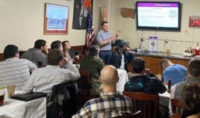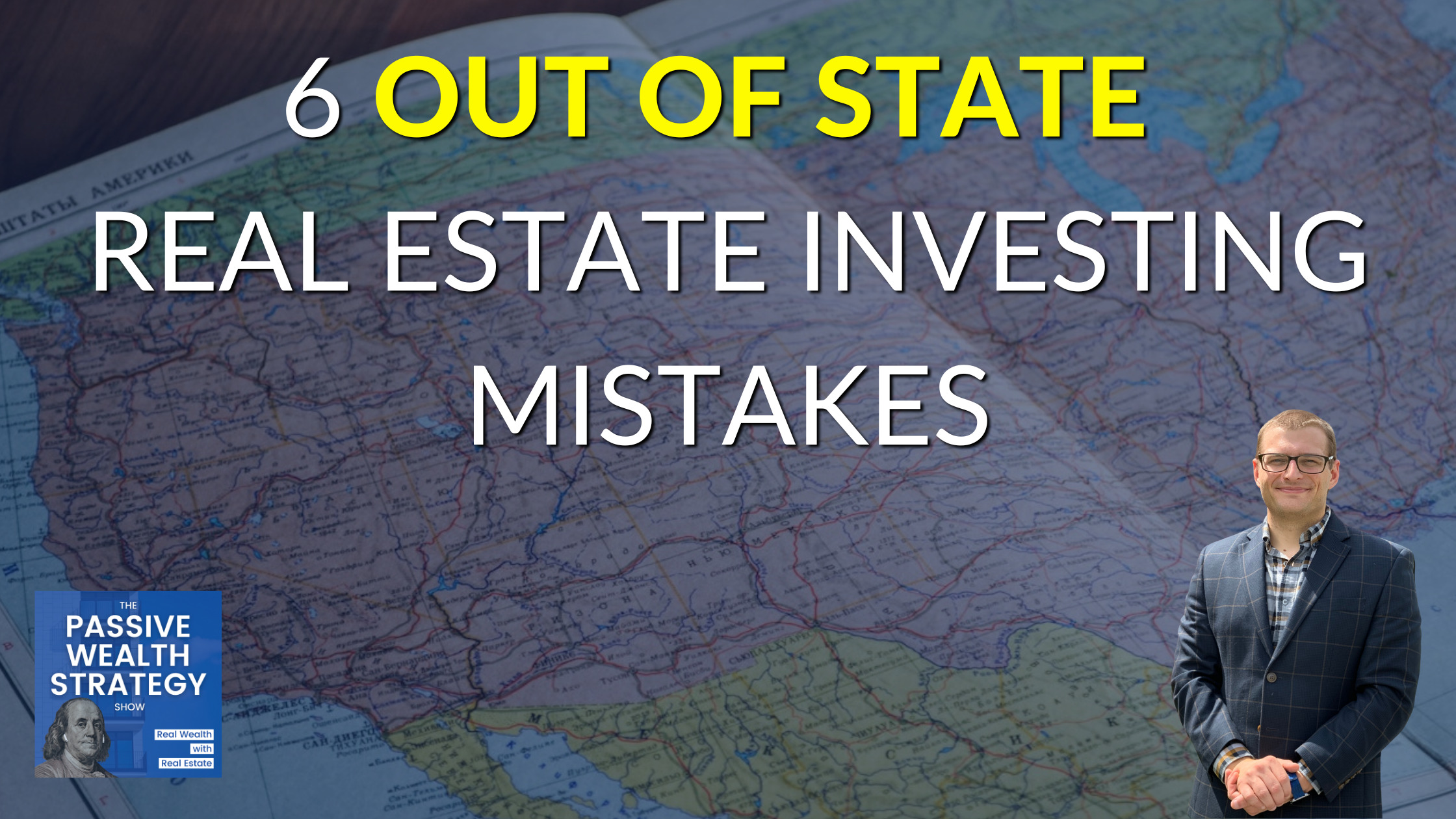Patent laws, copyright questions, and trademarks can be confusing for a lot of people. Who do you trust to help you wade through all the information and understand the complexity of it all? Vincent LoTempio, a registered Patent Attorney, helps clients untangle the web of Intellectual Property Law. Using the Coca Cola brand as an example, he teaches you all the necessary details you need to fully understand patent laws and some of these terms. As he shares some tips on investing, he emphasizes the risks you have to take to reach that success you are yearning for.
—
Must-know Patent and Copyright Law with Vincent LoTempio
Our guest is Vincent LoTempio. Patent laws, copyright questions and trademarks can be confusing. Who do you trust to help you wade through all the information and understand the complexity of it all? Vin LoTempio is a registered patent attorney and in the firm of Kloss, Stenger and LoTempio, helps clients untangle the web of Intellectual Property Law. As a registered patent attorney, LoTempio works with high-end corporate clients and inventors with a new idea they have never marketed, manufacture the product and everyone in-between. All the whole range of experience. He writes patent applications, councils on branding trademarks that have the ability to litigate infringement cases.
As a corporate IP consultant and lecturer, he trains inventors and corporate employees to identify intellectual property. As an inventor consultant, Vin can analyze new inventions to determine the feasibility of patentability and commercialization. He’s appeared on the History Channel’s Million Dollar Genius as the attorney for Wayne Fromm, the inventor of the selfie stick. He also co-wrote Patent Fundamentals for Scientists and Engineers, which takes the reader from an idea’s conception through the steps of patent protection. That should be an area of interest for many of our audience who have a product idea and are interested in bringing it to market, but I want to make sure they do it properly and they create a sustainable competitive advantage. I know we’ve got a lot of folks out there that want to learn more. Vin, welcome to the show.
Thanks for having me. I appreciate the opportunity to get in front of your audience.
I’m very happy to speak with you. I took a class in patent law when I was in college and I barely made it through. This is a good opportunity for me to brush up on things. Something that did stick with me was the difference between trademarks and copyrights. I see a lot of people making that mistake out there, the difference between trademarks and copyrights. Can you explain that to us and give me a refresher and explain to our audience?
I have a Coca-Cola bottle sitting on my desk and I use that as a teaching tool for new inventors. I have corporate clients and a mother with the baby bottle nipple and everything in between. The Coca-Cola bottle is a great example of all different types of intellectual property. First, it’s a bottle. It’s a container that holds a liquid and that would be a utility patent. What it does is just the look of the bottle itself would be a design pan. You can get a patent on the look of something, not necessarily on the function of it, the aesthetic look of it. You could stop people from making a Coca-Cola bottle, but you can’t stop them from making their own Pepsi bottle or 7UP bottle.
You probably pictured with those bottles look like in your mind. That’s the patent side of it. It’s the design and utility, what it does. Obviously, if you can stop somebody from making a bottle, a container that holds the liquid will be a very powerful piece of intellectual property. The bottle has been around for a while, but they’re just the example. The trademark on the outside of the bottle is Coca-Cola or on the cap, which it says Coke with a circle R. When you see that circle R on a product, you know it’s been registered with the federal government and it’s a registered trademark. They call it a source indicator. It allows the consumer to know the source of the product. When I walked into DICK’S Sporting Goods, when I buy a pair of Adidas, I know that Nike or nobody else could put that mark on that sneaker. I’m protected as the consumer and I’m protected as a manufacturer because I build goodwill through putting Nike on everything.
I was watching football. I noticed every NFL team and all their coaches have that Nike Swoosh someplace on their uniform, which is a very powerful brand indicator that the manufacturer made those products. Copyright is more like a work of art. With artists, it’s your copyright to the photograph for a book or an author, a statue or a sound recording. Those are copyrights. I argue that the Coca-Cola bottle is a pretty statue, but if you try to get a copyright on a bottle, they wouldn’t let you do it because it’s a functional item. You need to get a patent on the functional item. If you had a pair of scissors or a glass, you couldn’t get a copyright on that because it’s a functional item unless there was something that is separable from it.
There was a case where a woman’s uniform was trying to get a copyright on it. On the uniform, a picture of a butterfly was there. The court held that the butterfly was separable. It could be a copyright. It’s a work of art. The copyright is into the whole uniform, but it has separable parts. Maybe if you had the Coca-Cola bottle and you painted a design on it, that could be copyright. It could also be copyright if you have a logo and somebody created that logo for you, they would own the copyright. A lot of times, one of the first questions I ask trademark clients is, “Who painted this logo for you? Who did it? Did you do it yourself?” Because the person who creates it and puts it into a tangible form owns the copyright.
The only way to transfer the rights of copyright is through a written agreement. It’s called work for hire agreement. You hired him to create this logo for you, and that person who creates it is going to transfer their intellectual property rights and that copyright over to you, the owner of it, who paid for it to be done. If you didn’t have that contract and we just handshake or you just paid them $20 and he drew it up for you, he would still own the copyright of that. One more thing about the Coca-Cola bottle is the liquid on the inside. It’s a trade secret. If somebody can’t reverse engineer it, they can try to make a Pepsi Cola, but it doesn’t taste exactly the same, although I can’t tell the difference. You can protect it by trade secret. The Kentucky Fried Chicken trade secret for the recipe or the Big Mac recipe for the secret sauce is a trade secret. That’s why the Coca-Cola bottle is a great example. It helps you with the rudimentary ideas of what is intellectual property.
That makes some sense. For the basement inventor who has an idea for a product and it’s going to be an awesome product, if they don’t know whether they’re starting, they should seek a patent or a trademark. Maybe they think it’s more appropriate that they need a brand type of thing that should be going after a trademark or copyright. Is that something you can just go from zero to getting a registered trademark or do you have to be established like Coca-Cola? Is there some process there?
You can file an application. It’s called the intent to use in the future application for a trademark and you can preserve your rights in it so that somebody else doesn’t use it in the meantime. You file that and it’s the first to file with the patent. It’s very similar. They’re not the same rules exactly for a trademark but usually with a trademark, you gain common law rights the minute you start using it. You put a sign on the outside of the door or you put a label on a product and you start using it and you sell it. You have common law rights. People come to me, even lawyers saying, “I want to trademark this.” I said, “You trademark it when you start using it.” What we do is we register it for you, the attorney.
What an attorney does is he registers the trademark and puts everyone on the country and the country on notice that that’s your trademark because you’ve registered it in the Federal Register. If you don’t get the trademark by filing it, you get the trademark by using it and by coming up with it and then you preserve the rights by filing your application. You’re actively using the mark in commerce. That’s the word of art, in commerce. The constitution gives the government the right to regulate the individuals of states through the commerce clause. In order to get a federally registered trademark, you have to be using the mark in commerce and they define commerce as interstate going business in between states. With the internet, you put something on the internet the minute you have a website. You’re interstate, you’re in your world, you’re throughout the whole world so that usually isn’t a problem.
If you want to invent something, invite to make the world a better place. Click To TweetIt probably takes them two to five months just to open your application. The examiner will look at it and he’ll do his own search to see if it’s available, if nobody else’s already registered it. They’ll say, “You haven’t used it. I’ll give you six months from this date.” It’s probably a year before you have to put it on a product and start selling it. If you’re still not ready after that year, you can ask for an extension of time and you can ask for up to five extensions of time. Each extension is six months. You end up with about three years to use it. What happens in the meantime is you have to pay the government fee every time you ask for an extension. You have to pay my fee as the attorney to do it.
It’s not free but it’s not that bad. I think it’s a few hundred dollars to ask for the extension with the total with our fees. Maybe it’s $400 or $500. I’m not sure the exact number, but that’s the process. You can protect it right from the get-go if you’re in love with his name and you want to make sure that it’s available. I call it a sword in a shield. It’s the same thing with the patents and the trademark. The sword is I can stop other people from using. I cut them off below their knees. The shield is, if someone says, “You can’t use that mark. That’s mine. I have the registration. You can’t stop me from using it. It’s my shield.”
It’s important to do it. I think the problem from the get-go, from the inventor in the basement that doesn’t have a lot of money to spend, is he has to determine where is the best money spent to move this project forward and to protect it. That’s not always easy to do. Patents and trademarks are not an inexpensive thing. Especially patents are much more expensive than trademarks. It’s around $1,000. I charged for filing a trademark and it includes the government fee and our fees and the search. We’re pretty good at doing the searches. The search for a trademark isn’t just a knockout. Do they have it? It’s X, Y, Z Corporation.
It’s the phonetic equivalent. The term of art for trademarks is similarly confusing. There’s a likelihood of confusion. Is it likely to confuse people in the industry or consumers as to who is the source of this product? It’s not identically the same. If someone says, “If I changed the S to a Z or if I put an underscore, would that make a difference?” They consider those phonetic equivalents or the equivalence and there’s still going to stop you from getting the trademark. Our trademark search is a little bit more in depth. It’s not just a knockout search to see if it’s there, but the knockout search itself is still valuable because if it knocks it out, you’re done.
The problem with any searches, you’re hoping that you don’t find it. You’re searching for a negative and you can keep searching forever because you don’t find it. You just keep on searching, but if you do find it, you stop and you come up with another name. Probably the best time to change your name is right in the beginning before you have them on the shelves of a million places in the universe and you got to take all these labels off it. That would be a bad time. A good time is before you start producing anything to figure out if it’s a good trademark or not.
As I recall from having paid attention to this a little bit over the years, there was a big change. We went from first to invent to first to file in patents. From my very lay understanding, I understand that to be a very important change. Number one, do I have the change right? Am I getting that right? What impacts have you seen on the process and on the whole thing with that change in place?
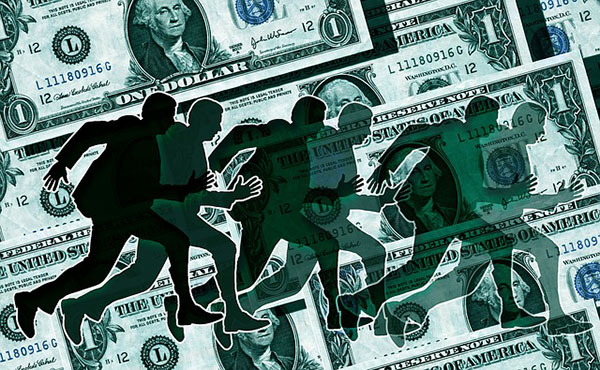
I think you have a pretty right way there. You used to hear the poor man’s patent. You put it in an envelope and you mail it back to yourself. Why was that important? That was important because you can prove before that you are the first to invent it. If I filed an application and you filed that next month, but you can prove that you invented it last January because you mailed it to yourself. I used to say it was a swearing back affidavit. I can swear the date back and say, “I had it on this date and I went into my lawyer’s office. He’s got a record that I had it on this day and I can be the first inventor to invent it.”
The rule is it doesn’t matter if you invented it first. It’s a race to the patent office, the first to file. It’s still the first inventor to file. You still have to be an inventor to file something. You can’t take somebody else’s idea and file it if you’re not the inventor. That’s always been the rule. Who’s to say if they invented it or not, and how do you prove that? I wouldn’t want to get into that argument. I’d rather say I’m first to file and then let them figure out who the inventor is. Now they have what’s called the derivation proceeding. If you can prove that that person derived it from you, most likely the scenario would be that you worked for a big corporation like Sony or Apple and you quit, then you ran out and you filed it. They can say, “He derived it while he was working at Apple.” All of a sudden you filed it. He drives it from us.
Even though he filed it first, we still should get the patent and you would have that fight. Essentially, I think your question is how does it affect everything? I think at the end of the day, whether you’re their first inventor or you’re the first one to file it, it’s a race to the patent office and the first one in there and 99.9% of the time is going to get the patent. That changed things up in. I think one of the big reasons why they did it is because of reciprocity with the rest of the world. We were one of the few countries left that was still using the old system and this put us on par with the rest of the world. That was a big reason why they did it.
That’s quite the change. Are there any other large developments in the patent world particularly? We’re having the digital revolution and everything. It’s all great, but undoubtedly nobody thought of the problems that everything was going to present 50, 60, 100, 200 years what was going to happen with computers and phones and cryptocurrencies and everything. What have we seen related to developments of patent law?
I would say it’s been changing. There’s a bunch of cases about it. It’s clearly on the business method and of business of patents. Mostly those business methods are our apps, all the electronic world. The Supreme Court has come down with these cases, a whole series of them. The original one was the Alice case and there’s the Bilski case. What they’re seeing is that abstract ideas on their own are in patentable and you have to tie it to the real world somehow. There are four types of the patentable subject matter. There’s an article of manufacturer like a pencil. There’s a machine like a new computer. There’s the composition of matter, like a new drug or alcohol, and then finally the business methods.
The business methods came along in the ‘90s when a lot of these different business methods for picking stocks and a lot of computer-generated models. A lot of patents came out in the ‘90s and the 2000s. These cases came out where the Supreme Court says that if it’s just happening within your phone, it’s just happening within your computer. All it’s doing is making what you can do outside of the computer, faster and easy, that’s an abstract idea and it’s not patentable. You have to tie it to something in the real world like a machine or a transformation of matter. You have to move something around in the real world. It’s like the Uber thing and Lyft that’s going on that’s changed the whole transportation industry.
There are three things you have to do in this business - You have to be able to be street smart, be book smart, and network. Click To TweetThere’s a lot of patentable subject matters within those apps and there are parts of it like the general idea that isn’t patentable otherwise, Uber and Lyft couldn’t simultaneously live together and operate together. There are parts of their app and parts of their technology that is patentable. I think I was searching for the Uber patents and there was a bunch of patents on their technology. That’s been the biggest part, unless you can show that something’s happening outside that phone or you solve some industrial problem. That’s always been a problem, but not just doing something that they’ve always done before that there was just happening outside of the computer where you can’t get a patent.
That’s been making it difficult. A lot of the patents that were issued are being attacked by their competition. Sony and IBM are attacking their competitor’s patents. That’s where you hear a lot of patent wars that are going on. Like anything, it goes in stages. They’re strict when it first comes out and then they lighten up on it. I think they were swinging back to lighten it up a little bit on it. I think the longest file I have in my portfolio that I take care of is a computer program that we’ve been fighting for years. A big part of it is that the examiners aren’t even sure what the rules are and they have been going back and forth and fighting over it. It’s been brutal.
When people call me with their new app ideas, I have to warn them right away that this is an influx in the industry. Nobody knows how to work it. They’ve tried different ways of doing it. We’ve watched even patent attorneys changed different tactics and then got it, and then the patent office decides that “We didn’t like the way you’re doing it and we’re not going to accept those types of claims.” It’s been the biggest change in the industry and that’s the hardest part. It’s probably the most exciting part of the industry too. The ability to do everything remotely through the internet. There are 300 million subscribers to Amazon Prime and those people are all buying stuff.
There are 400 million products on Amazon and there’s the ability to go to China. Anybody can make a connection in China or go anywhere in the world and manufacture something. You instantly have distribution through the mail and marketing all set up for you with Amazon. If you looked at Amazon fifteen years ago, it wasn’t worth anything. Who was the king of the road? It was Sears, Kmart, Macy’s. They’re all going bankrupt. The ones that are still alive, the brick and mortars are even close to the value of Amazon. Who would have thought Amazon, who is selling books that were going to turn into this monster? I don’t know what they’re valued at. It’s something like $247 billion or some crazy number.
Sears was valued at $10 or $18 billion. It’s not even close to what’s happening exponentially as far as the ability to sell a product. It’s not just the big manufacturers, it’s the mom and pops that are able to put up their shops. I have a client that came in, they’re selling a product through Amazon. They weren’t selling anything. They both have normal jobs. One’s a teacher at the University of Buffalo and ones does something else. I said, “How did you start this company?” They’re making $70,000, $80,000 a month selling products on Amazon. They said, “Our fourteen-year-old son, he had a homework assignment to go home and start a business online. He started the business. We fired him and we’re taking over the business.” It’s one example and it’s not the exception. There are tons of people doing that. It’s an exciting time to be an inventor.
Vincent, what is the best investment you ever made?
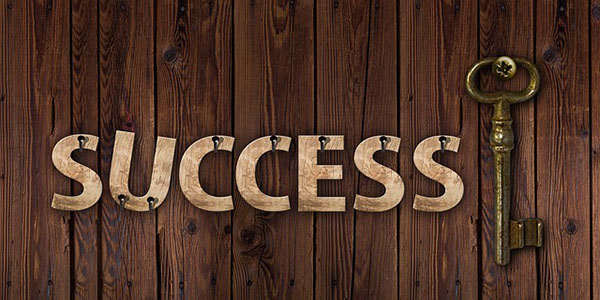
I don’t know if people know this, but I lost my arm when I was twelve-years-old. I got a decent amount of money and I’ve invested in when I was eighteen. I invested in the stock market. The first thing I think about investments was what I put in the stock market and I bought IBM as one of the first things, and I still own it. A lot of people say, “If you ever bought IBM and sold it, no matter when you bought it or solved it, you’re not happy.”
I think for me, I invested in the market and let it work for itself. My father had told me when I first started, “All your friends are going to have fancy cars and buy new hubcaps and nice clothes and diamond rings and stuff and if you start spending your money, whatever it is, it’s going to be gone before you know it.” I made pretend I didn’t have it. Believe it or not, I’m 58-years-old. I still haven’t touched any of it. It’s sitting in the stock market. Even though I didn’t take any money out of it, I bought myself Tesla S, and I’ve been driving that. It’s been the toy that I’ve been driving around and it’s fun. The slow and steady wins the race and I put in blue-chip stocks and let ride the highs and lows of the market and I’ve always done pretty well without taking big risks.
On the other side of that, what is the worst investment you’ve ever made?
I always say, even if I lose money, you’ll learn something. I bought some stocks along the way that tanked. You have to have risk in your life to have that big success. At the end of the day, I’m not afraid to take a risk. My whole life I’ve been pretty much steady blue chippers, so nothing has been a bad investment. Even inventors sometimes put themselves out on a limb. If you’re in it just for the money, you’re probably in the wrong business. I always say, “If you want to invent something, invent to make the world a better place.” Try to clean up the coral reefs or try to figure out how to take the carbon out of the smokestacks and use it for something positive and not to pollute our environment.
I’m sure if you invented that, you’d be rich beyond all your dreams of avarice, but you’d still make the world a better place. At the end of the day, even if you’re invested and it doesn’t come out successful and you’re not making money. I think you still learn and you’re living your life and doing what you want to do and going forward. I’m not afraid to lose money and I’m not afraid to take a chance on certain things. I’m never going to put it all up on one roll of the dice in Las Vegas. It’s not my nature, but don’t be afraid to fail. There’s an old saying by Shakespeare in the Julius Caesar play when the lady says to Julius Caesar, “Be aware of the Ides of March.” Julius Caesar’s voice says, “Don’t go.” He says, “If I don’t go, I’ll die a thousand deaths every time I’m afraid. I’m not going to be afraid. I’m going to live with courage and if it kills me, so be it that I’m only going to die one death.”
That’s a good point. I like that. I had forgotten about that. What is the most important lesson that you’ve learned in investing?
It’s to be slow and steady. Stays with the true and the try. I say the same thing to my kids. There are three things you have to do in this business. You have to be able to be street smart. You have to be book smart and you have to network. You have to find out as much information as you can and meet as many people as you can and see if working together with somebody else and you have a higher goal. The synergy of working with other people, I think that’s the key and being able to meet as many people as far as learning whatever you have to do. They say if you spend one hour a day for a year, you can be an expert on anything. I think that one hour is meeting people, asking as many questions as you can as many people and figuring out the best way to do something, to solve the problem. I asked one of the inventors that I had, “How do you solve these problems?”
First, you have to identify the problem. Whatever the problem is, you have to acknowledge in your heart that you’re going to fix this problem. Make the doorknob work better, whatever your idea is. You put together all the facts of why the doorknobs are not working the way it’s supposed to work and you go through all the different methods to fix it and you pick the best one. The only way you can do that is by asking question after question. There are so many quotes that go along with it. I think Einstein said, ‘’Ask as many questions as possible,” and Thomas Edison said, “When I invent something and I failed 99,000 times and I finally succeed on the last thing, I still learned 99,000 ways it didn’t work. He learned something each time it didn’t work.”
Where can our audience get in touch with you and how can they learn more if they’ve got their product idea or their brand idea and they want to hit the ground running?
I put up a YouTube channel. It’s called PatentHome. If you search my name, I’m sure it’ll come up, Vincent LoTempio or even patent and I think I come up on the front page. I have about 40 videos asking and answering basic frequently asked questions. They’re all like a minute long, so they’re not going to kill you. When I first started to do it, I think I was in an interview phase and I was doing fifteen-minute videos and I have 35,000, 40,000 views on some of the videos. It’s a free place. It’s not advertisements for myself. It’s answering basic questions about patent and trademark law.
You can get ahold of me at (716) 853-1111. I have a bunch of 800 numbers on the internet. They’re just used the track me, but a couple of them ring right to my cell phone. If you call one of those, you can probably get right to me on the phone. I sometimes question my sanity about putting it right to my cell phone, but I talk directly to a lot of inventors and they’re even surprised when I pick up the phone sometimes. You can do that. If you type in my name and patent, I’ve got a pretty good a presence on Twitter, LinkedIn and Facebook and all those social media places.
I want to thank you for joining us. It’s been nice to get a refresher on all of these topics and I’m sure the audience out there who have these great ideas and want to move forward with exploring a patent or trademark or copyright, whatever it might apply to their business. I’m sure they got quite a bit and I hope they follow up with you. Pick up a copy of the book and check out your YouTube channel. I want to thank everyone for tuning in. If you’re enjoying the show, please introduce us to a friend. Bring them in and let’s help them grow their wealth passively along the side. We’ll talk to you on the next one.
Important Links:
- Kloss, Stenger and LoTempio
- Patent Fundamentals for Scientists and Engineers
- PatentHome – YouTube Channel
- Twitter – Vincent LoTempio
- LinkedIn – Vincent LoTempio
- Facebook – Vincent LoTempio
- www.LoTempioLaw.com
- www.KlossLaw.com
About Vincent LoTempio
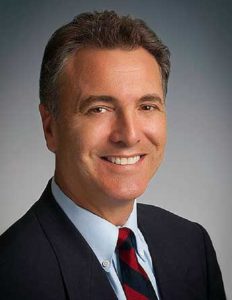
As a Corporate IP Consultant and Lecturer, he trains inventors and corporate employees to identify intellectual property. As an Inventor Consultant, Vin can analyze new inventions to determine feasibility of patentability and commercialization. Vin LoTempio appeared on History Channel’s “Million Dollar Genius” as the attorney for Wayne Fromm, inventor of the “Selfie Stick”. Vin also co-wrote “Patent Fundamentals for Scientists and Engineers,” which takes the reader from an idea’s conception through the steps of patent protection.
